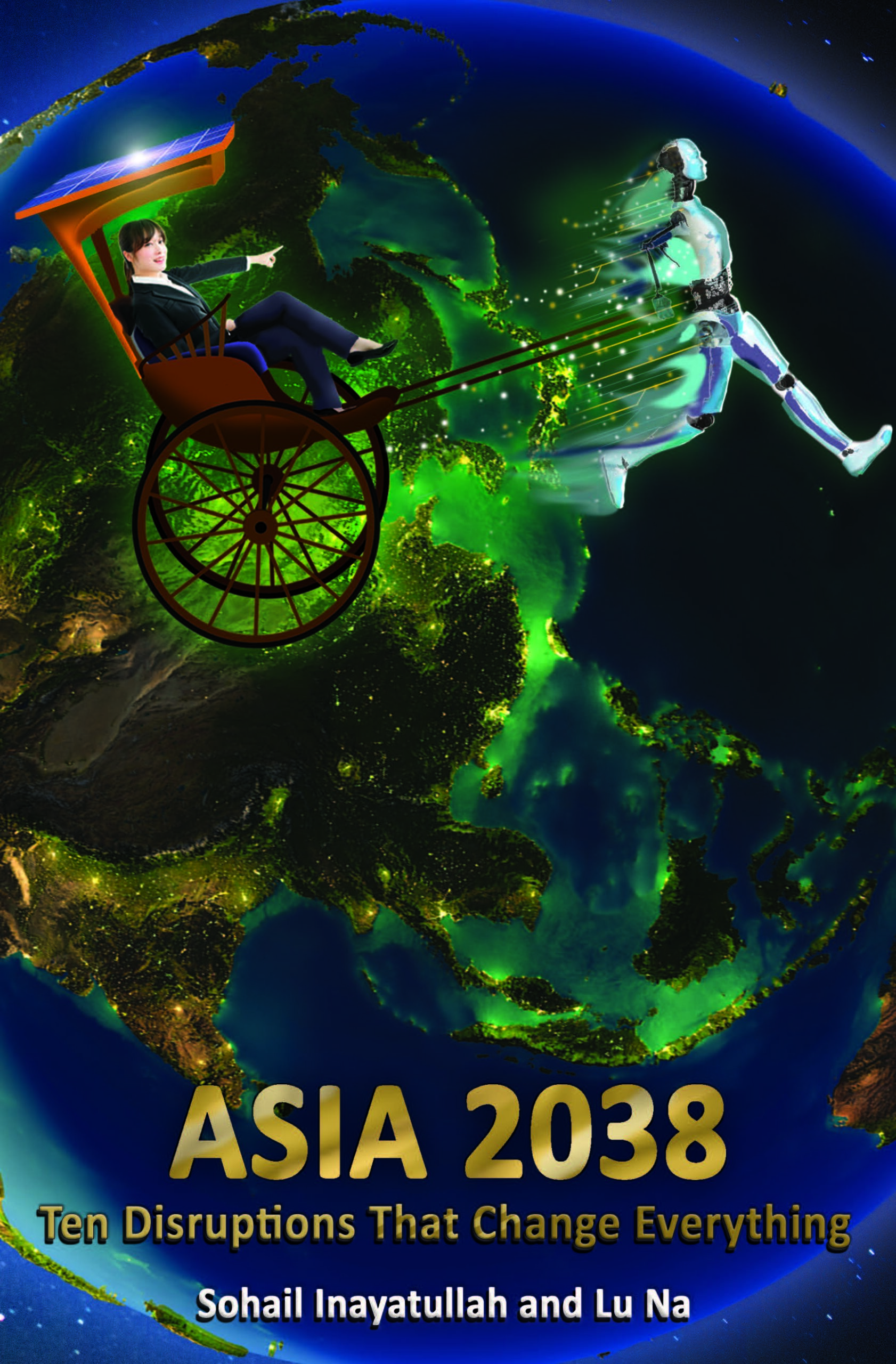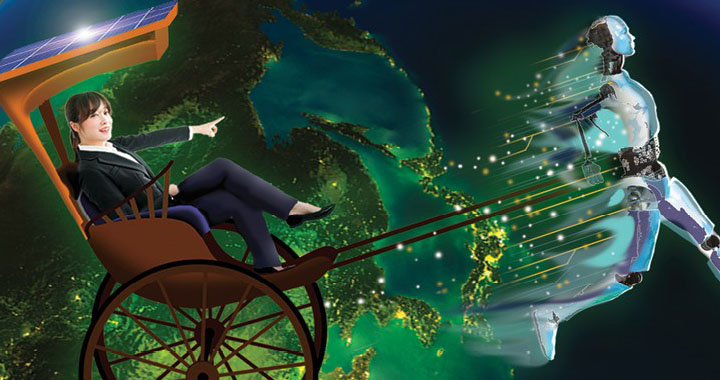Asia 2038: Ten Disruptions That Change Everything
By Sohail Inayatullah and Lu Na
Graduate Institute of Futures Studies, Tamkang University, Tamsui, 2018
Using insights from hundreds of foresight workshops in Asia, ASIA 2038: Ten Disruptions That Change Everything explores ten key disruptive emerging issues. These include:
- The rise of Asian women;
- The new extended Asian family;
- The end of the God King and the Big Man;
- New facilitated models of learning and teaching;
- The wandering societies of Asia;
- Climate change leading to institutionalized foresight;
- The great migration to Asia;
- Towards an Asian confederation;
- Asia leading in the transition to a spiritual post-capitalist society; and,
- An Asia that says yes to itself.
Along with an analysis of these disruptions, stories are used to illustrate these new futures.

Inayatullah and Lu Na argue that Asia is in the midst of a major and foundational shift. The shift is not only related to the spheres of economy, technology and geo-politics; equally important are current and coming social and cultural changes.
But this book is not just about what is likely to happen, it focuses more on using the future to create desired visions, since what we can foresee and imagine, we can also create.
Asia 2038 highlights ten interrelated emerging issues or disruptions that point towards multiple possibilities for Asia. The book intends to provide a working map of the nature of both the disruption and the many possibilities ahead, so that wiser decisions can be made as we create futures. In addition to these many possibilities the book also outlines a number of shared desired visions for Asia 2038, based on decades of conducting workshops and interviews with a range of people across the region.
Emerging issues are credible, potentially high impact occurrences which may be of low probability at the time they are identified. However, if and when they become the new norm, they ‘change everything’. What appears impossible can suddenly become the plausible.
Certainly, in the next twenty years and beyond, many things will remain stable. At the same time, we can also expect dramatic changes. As to which Asia actually emerges, while there are signs enabling “Continued Asian Miracle” and flatter, greener, more transparent, equitable and confederate Asia, other futures, such as “Asia in Decline” or perhaps “Fortress Asia” are equally possible. Whichever future results, the emerging issues and trends suggest more, not less, disruption in the decades to come.
However, Asia 2038 is thus not only about emerging trends and disruptions to come or about possibilities and scenarios for the future. It is also about imagining the best version of Asia, an Asia that continues to innovate and flourish in ways that benefit current and future generations. In sum, Asia 2038 as it could be.
Length: 142 pages

